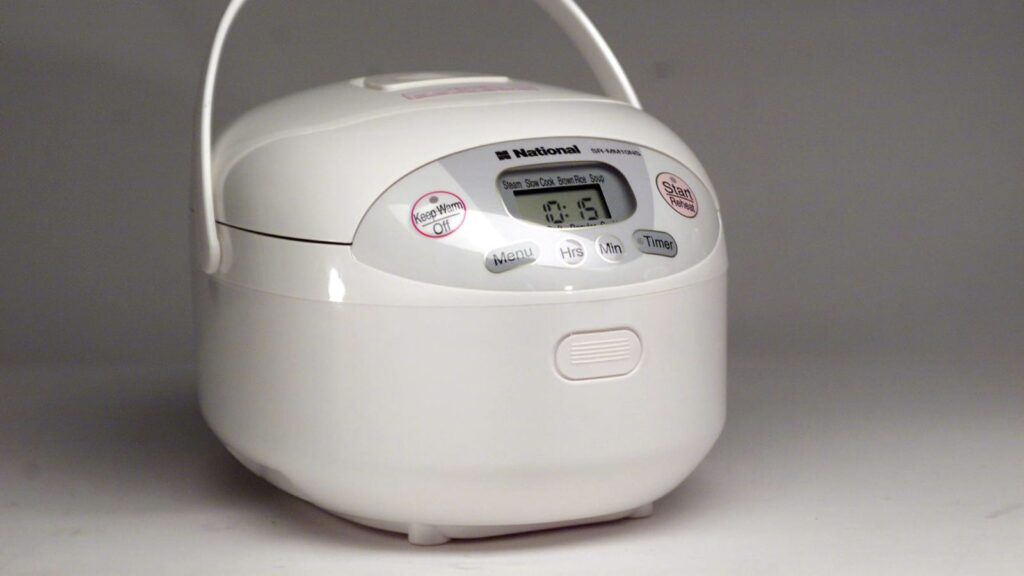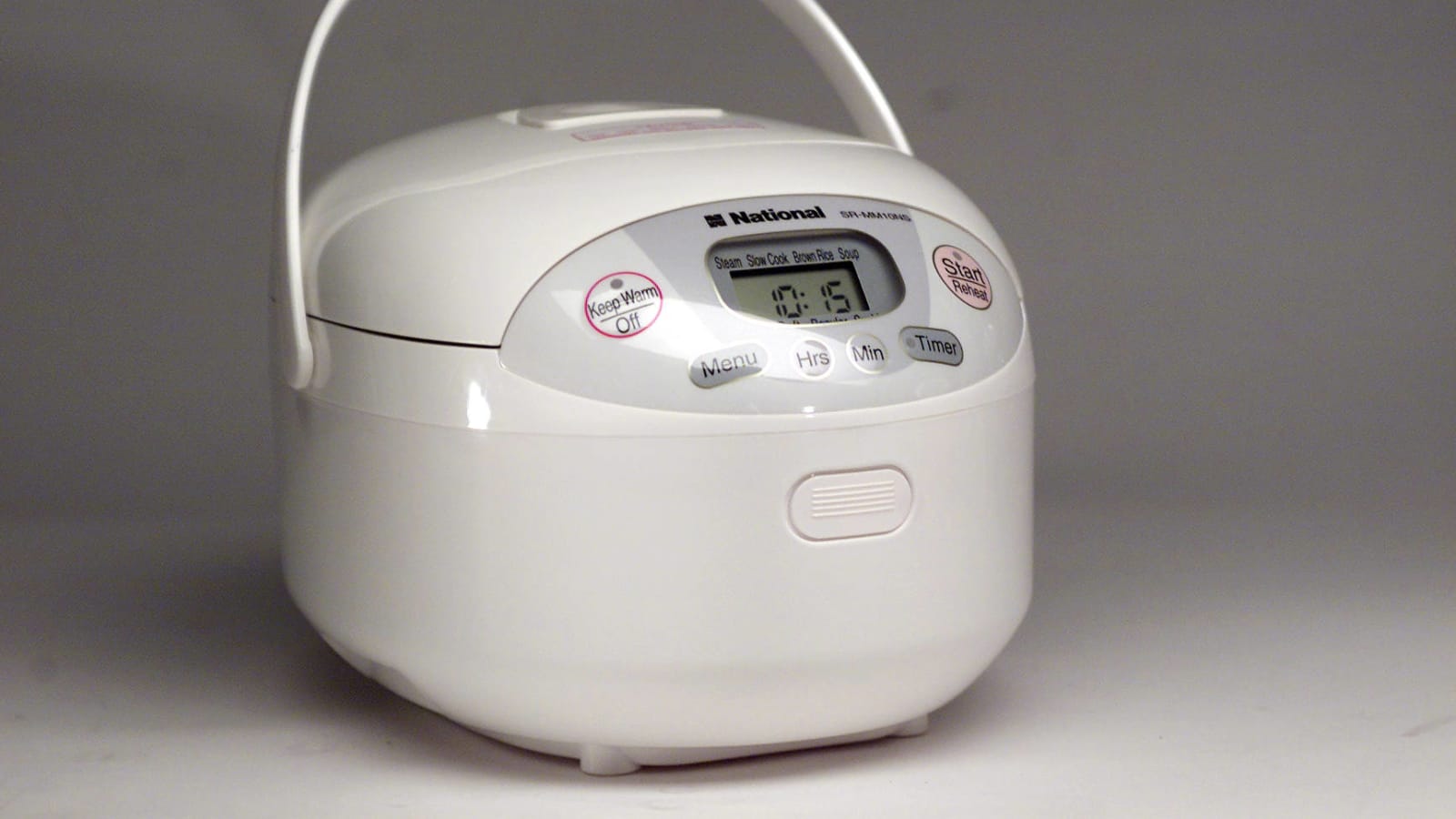
Rice Cooker and Its Uses: A Comprehensive Guide
The humble rice cooker, often overlooked in the modern kitchen, is a versatile appliance that extends far beyond simply cooking rice. For decades, it has served as a reliable workhorse, providing perfectly cooked rice with minimal effort. But the rice cooker‘s capabilities don’t stop there. From steaming vegetables to preparing entire meals, this appliance offers a range of culinary possibilities that can simplify your cooking routine and expand your repertoire. This guide explores the various rice cooker uses, offering insights into maximizing its potential.
The Evolution of the Rice Cooker
The history of the rice cooker is rooted in Japanese ingenuity. Early versions, dating back to the late 19th century, were simple wooden boxes heated by charcoal. These evolved into electric models in the mid-20th century, becoming increasingly sophisticated with features like automatic shut-off and keep-warm functions. Today, modern rice cookers boast microcomputer technology, fuzzy logic, and induction heating, ensuring precise temperature control and consistent results.
Core Function: Cooking Rice Perfectly
At its heart, the rice cooker excels at cooking rice. Whether it’s long-grain, short-grain, brown rice, or even wild rice, the rice cooker consistently delivers fluffy, perfectly cooked grains. The key is understanding the water-to-rice ratio specific to each type of rice and your particular rice cooker model. Most rice cookers come with a measuring cup and water level markings inside the pot, making this process straightforward. The automatic shut-off function prevents burning, ensuring a consistent and delicious outcome every time. Different types of rice require different approaches. For example, brown rice typically needs more water and a longer cooking time than white rice.
Beyond Rice: Expanding the Culinary Horizons
The true versatility of the rice cooker lies in its ability to cook a variety of foods beyond rice. Here’s a look at some of its most popular uses:
Steaming Vegetables
Many rice cookers come with a steaming basket that sits above the rice pot. This allows you to steam vegetables simultaneously while cooking rice. Simply add water to the pot, place the vegetables in the steaming basket, and let the rice cooker work its magic. Steaming preserves the nutrients and flavors of vegetables, making it a healthy and convenient cooking method. Broccoli, carrots, asparagus, and green beans are excellent choices for steaming in a rice cooker.
Cooking Grains and Cereals
Beyond rice, a rice cooker can be used to cook other grains and cereals like quinoa, oats, barley, and millet. These grains require different water-to-grain ratios and cooking times, so it’s important to consult recipes or online resources for guidance. Cooking grains in a rice cooker is a hands-off process, freeing you up to focus on other tasks.
Preparing Soups and Stews
With the right recipe, a rice cooker can be used to prepare simple soups and stews. The key is to avoid recipes that require high heat or searing, as rice cookers are designed for gentle, consistent cooking. Lentil soup, chicken noodle soup, and vegetable stew are all good options. Be sure to monitor the cooking process and adjust the liquid level as needed.
Making Yogurt
Some rice cookers have a yogurt-making function, but even without this feature, you can still use a rice cooker to make yogurt. The process involves maintaining a consistent temperature of around 110°F (43°C) for several hours, which a rice cooker can achieve on its “keep warm” setting. This method requires some experimentation and careful monitoring, but it can be a rewarding way to make homemade yogurt.
Baking Cakes
Believe it or not, a rice cooker can also be used to bake cakes. Simple cake recipes, like sponge cakes or chocolate cakes, work best. The cake batter is poured directly into the rice cooker pot, and the appliance is set to the “cook” setting. The cooking time will vary depending on the recipe and the rice cooker model. Check for doneness by inserting a toothpick into the center of the cake; if it comes out clean, the cake is ready.
Tips for Maximizing Your Rice Cooker’s Potential
To get the most out of your rice cooker, consider these tips:
- Read the Manual: Familiarize yourself with the specific features and functions of your rice cooker model.
- Use the Right Water-to-Rice Ratio: Experiment to find the perfect ratio for your preferred type of rice.
- Don’t Overfill: Avoid overfilling the rice cooker, as this can cause it to overflow.
- Clean Regularly: Clean the rice cooker pot and lid after each use to prevent buildup and odors.
- Use a Non-Abrasive Sponge: When cleaning the pot, use a non-abrasive sponge to avoid scratching the non-stick coating.
- Experiment with Recipes: Don’t be afraid to try new recipes and explore the full potential of your rice cooker.
Modern Advancements in Rice Cooker Technology
Modern rice cookers are packed with advanced features that enhance their performance and versatility. Fuzzy logic technology uses sensors to detect the type of rice and adjust the cooking time and temperature accordingly. Induction heating provides more even and precise heating, resulting in perfectly cooked rice every time. Some models also have pre-programmed settings for different types of rice and other dishes, making cooking even easier. [See also: Best Rice Cooker Brands of 2024]
The Rice Cooker in Different Cultures
The rice cooker holds a special place in many cultures, particularly in Asia, where rice is a staple food. In Japan, the rice cooker is a ubiquitous appliance found in nearly every household. It is considered an essential tool for preparing perfect rice, a key component of Japanese cuisine. Similarly, in other Asian countries like China, Korea, and Thailand, the rice cooker is widely used and appreciated for its convenience and efficiency. The different cultures have developed various recipes and techniques for using the rice cooker, showcasing its adaptability and cultural significance.
Troubleshooting Common Rice Cooker Issues
Even with proper care, you may encounter some common issues with your rice cooker. Here are some troubleshooting tips:
- Rice is Too Sticky: Reduce the amount of water used.
- Rice is Too Dry: Increase the amount of water used.
- Rice is Burning: Ensure the rice cooker is on a level surface and that the heating element is clean.
- Rice Cooker Won’t Turn On: Check the power cord and outlet. If the problem persists, consult the manufacturer’s instructions or contact customer support.
The Future of Rice Cookers
The rice cooker is likely to continue to evolve with advancements in technology. We can expect to see more smart rice cookers with app integration, allowing users to control the appliance remotely and access a wider range of recipes. Improved sensors and algorithms will further enhance the precision and consistency of cooking. The rice cooker will remain a valuable tool in the modern kitchen, simplifying meal preparation and expanding culinary possibilities.
Conclusion: The Indispensable Rice Cooker
The rice cooker is more than just a kitchen appliance; it’s a versatile tool that can simplify your cooking routine and expand your culinary horizons. From perfectly cooked rice to steamed vegetables, soups, and even cakes, the rice cooker offers a range of possibilities. By understanding its capabilities and following the tips outlined in this guide, you can unlock the full potential of your rice cooker and enjoy delicious, healthy meals with minimal effort. The rice cooker truly is an indispensable addition to any modern kitchen. Its ease of use and versatility make it a must-have for busy individuals and families alike. Whether you’re a seasoned chef or a beginner cook, the rice cooker can help you create delicious and nutritious meals with ease. Invest in a good quality rice cooker and explore the endless possibilities it offers. You’ll be amazed at what you can create with this simple yet powerful appliance. [See also: Rice Cooker Recipes for Beginners]

